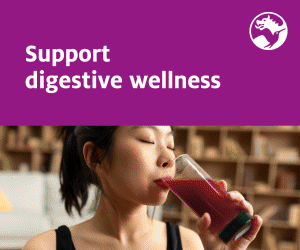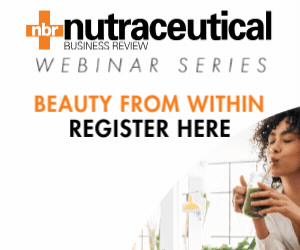With so many options available, how can a vitamin or supplement company encourage consumers to pick out its offerings from the competition? By price and brand recognition, yes, but it can also be achieved by offering new preferred benefits and improved efficacy.
Formulators have been known to use a variety of strategies to enhance the performance of supplement products. One example is the application of creative new formulation technologies to standard ingredients, making them easier or more convenient to take, for example, or improving their bioavailability or absorption profile.
Improved dispersion technology is another procedure that can be used to make more appealing supplements. Catalent Pharma Solutions, for example, uses an optimised mixture of food-approved surfactants combined with calibrated blends of flavour masking and antioxidant ingredients to enhance the dispersion of poorly soluble substances by creating smaller droplets. The subsequent dispersion can then be encapsulated in a softgel.
Both absorption and bioavailability can also be enhanced with carefully chosen ingredients
Significant advantages can be achieved with this technology, particularly when the supplement comprises pungent oils (such as fish or garlic), which often have an unpleasant taste — and an even more unpleasant aftertaste. As the oil in question will now disperse readily in the stomach, compared with a simple oil-filled gelcap, reflux is minimised and, in addition, those unappealing fishy or garlic-flavoured burps will be greatly reduced, if not completely eliminated. Both absorption and bioavailability can also be enhanced with carefully chosen ingredients.
Gelatin alternatives
The traditional softgel capsule is not compatible with certain consumers, such as vegetarians, as the gelatin is animal-derived. It can also conflict with certain religious dietary demands, which prohibit the consumption of materials from particular animals. And, despite the removal of potentially harmful cow material from the food chain, concerns about bovine spongiform encephalopathy (BSE) still remain.
An all-vegetable softgel shell would immediately remedy these concerns. For example, Catalent’s Vegicaps capsule shells are GMO-free and free from animal derivatives, making them compatible with the consumer drive for all-natural products. They also meet the dietary demands of those on gluten-free diets, and those looking to reduce the amount of sugars they consume. But, they retain the advantages of the standard softgel, such as the fact they are easy to swallow, and are both odour- and taste-free. They are also biodegradable and environmentally friendly, and available in a variety of colours, shapes, sizes and clarities.
The capsule shells are made from the seaweed extract, carrageenan, mixed with a modified cornstarch and combined with a suitable plasticiser, providing the optimal blend of strength and solubility. Further technical advantages include the ability to be filled at higher temperatures (70°C maximum, compared with 40°C for gelatin) and higher pH levels. They are also compatible with a wider range of fill excipients.
Vegicaps capsule technology is a good way to differentiate a product by creating a standout 'all-vegetal' product line with, for example, selected blends of precious vegetable oils or more complex formulations with different nutrients (such as vitamins, minerals, herbal extracts, PUFA-rich oils and minerals). The shells allow for the careful selection of ingredients to build a coherent 'vegetal' or 'natural' formulative background to achieve the desired product positioning. And, in addition, Vegicaps technologies can be used in multiple application areas and do not limit the formulator’s innovative goals: from eye health (with well-known nutrients for healthy vision such as lutein, zeaxanthin, DHA, zinc, copper and vitamin E/C) or hair health (amino acids, vitamin, minerals and herbal extracts), sun protection for the skin (carotenoids, vitamins, natural antioxidants, herbal extracts and micronutrients such as selenium or manganese) to general antiageing (carefully balanced PUFA-rich oils including borage and primrose, and herbal extracts with high antioxidant activity).
But what about capsules as a single dose ‘storage device’ for products designed to be taken in liquid form? These could be particularly useful when dosing children and the infirm, as the liquid can either be taken directly or added to food or drinks. They are lighter to carry than typical bottles with a dropper and, furthermore, if the liquid has a tendency to degrade in the air, encapsulation protects it from the atmosphere and facilitates administration.
The best of both worlds is possible if that single-dose capsule is easy to open (by cutting or twisting the end off). The contents are protected but simple and convenient to access. One example is an omega-3 oil product marketed in Australia that is shaped like a fish, but many other shapes and sizes are possible, adding to the marketing potential.
Chewable supplements
For some consumers, particularly children, the concept of a supplement that they can chew like confectionery rather than swallow is extremely appealing and improves compliance. Of course, for a chewable product, an appealing taste profile is essential; Catalent’s new EasyBurst chewable capsules offer both good chewability and taste masking properties. Various fish oil supplements have already been produced in this way, based on the various health properties of omega-3, including brain boosting DHA, high-dose EPA and DHA for cardiovascular health, and complex formulations of fish oil omega-3 with vitamins and minerals for a complete well-being approach to today’s busy lifestyle.
A new, thinner chewable shell technology is currently in development
A new, thinner chewable shell technology is currently in development. An example formulation, yet to reach the market, is in the form of chewable bone-support softgels that are designed to ensure that children get enough of the vitamins and minerals they need to build healthy bones. The capsules burst open when chewed, releasing a tasty liquid formulation that contains calcium plus vitamins D and K.
Another creative technology that can be applied to supplement products is the SoftDrop lozenge developed by Catalent in Germany. This dual delivery platform has a soft centre that provides a burst of liquid in the mouth and the controlled release of an active within the shell matrix. Clearly, this has real potential in the cough lozenge field, with a liquid centre (possibly also containing vitamin C) giving pleasantly flavoured, long-lasting relief, with zinc incorporated into the soluble outer shell to support a healthy immune system. The actives come into immediate contact with the mucosa in the mouth for rapid delivery. And although this product has yet to reach consumers, it shows the technology’s potential to create a convenient and attractive on-the-go dosage formulation in the supplement arena.
Fidia Farmaceutici, a nutritional supplement company, used an alternative mucosal delivery technology in the product SameFast, containing S-adenosyl-L-methionine (SAMe), folic acid and vitamin B12. This technology enhances the absorption of the active (SAMe) through the mucosa in the oral cavity, a strategy that allows the first pass of the liver to be bypassed and absorption to be enhanced. It is of particular value in developing tablet formulations.
Food-VMS crossovers
A new emerging trend is to differentiate traditional or commodity foods by adding ingredients that offer additional health or beauty benefits. German company Beauty Sweeties, for example, has created a range of confectionery that combines the benefits of superfruits with the supplement ingredients coenzyme Q10, aloe vera, collagen or biotin. The fruit jelly hearts, yoghurt cream pralines, crispy white chocolate bars and fruit confections have obvious appeal to those with a sweet tooth, allowing them to nibble on treats that provide beauty, lifestyle and health benefits.
Another product example in line with this new 'crossover' trend is the beverage formulation designed as a beauty food product called Power Root’s Perl instant cappuccino, which contains collagen to promote skin health. It also offers an instant hot chocolate formulation. These products are currently on sale in the Middle East, and the potential appeal to consumers of an easy-to-take hot beverage that has skin benefits is clear.
Printed unit doses
Although printed unit doses and multicolour capsules may not offer performance benefits in dosing, they do offer significant marketing opportunities and an easy way to make a VMS product stand out. For example, using different coloured gelatins to make the two ribbons used to form the capsule can produce bicolour softgels.
Interesting shapes can be created by using non-standard moulds that form softgels in a multitude of morphologies
Interesting shapes can be created by using non-standard moulds that form softgels in a multitude of morphologies, from fish and bears to flowers. Printing can be applied to the capsules, either to make them more attractive or to improve identification. Catalent’s latest addition in this area is GraphiCaps capsules, which enable precise, inline premium printing to enhance a brand’s equity and positioning.
Raw material choice
Differentiation can also be achieved by employing raw materials that offer some form of added consumer value. If an enhanced form of an otherwise common raw material is available that has obvious benefits compared with those used by other manufacturers, it can then be used to set a formulation apart from the competition. Some good examples of differentiating by choosing a new source for well-known ingredients include:
- alternative vegetal sources for animal-derived ingredients (algal DHA compared with fish oil DHA, for example)
- natural compounds instead of synthetic ones to promote naturally synergistic activity (natural blends of carotenoids and/or tocopherols compared with single molecules of synthetic origin)
- bioactive nutrients (organic salts versus inorganic ones and factors such as solubility, bioavailability and the specific activity required in the product)
- stable actives to reduce nutrient interactions and avoid degradation)
- well defined and standardized herbal extracts and botanicals
- novel delivery forms that offer added value such as increased bioavailability or targeted release (liposomal, enterically coated, presuspended, buffered, etc.)
Careful consideration of the product type and the target consumer is vital when determining a product’s optimal marketing proposition. Whether differentiation relies on added value ingredients or technical wizardry, any supplement product can be made to stand out from the competition.




